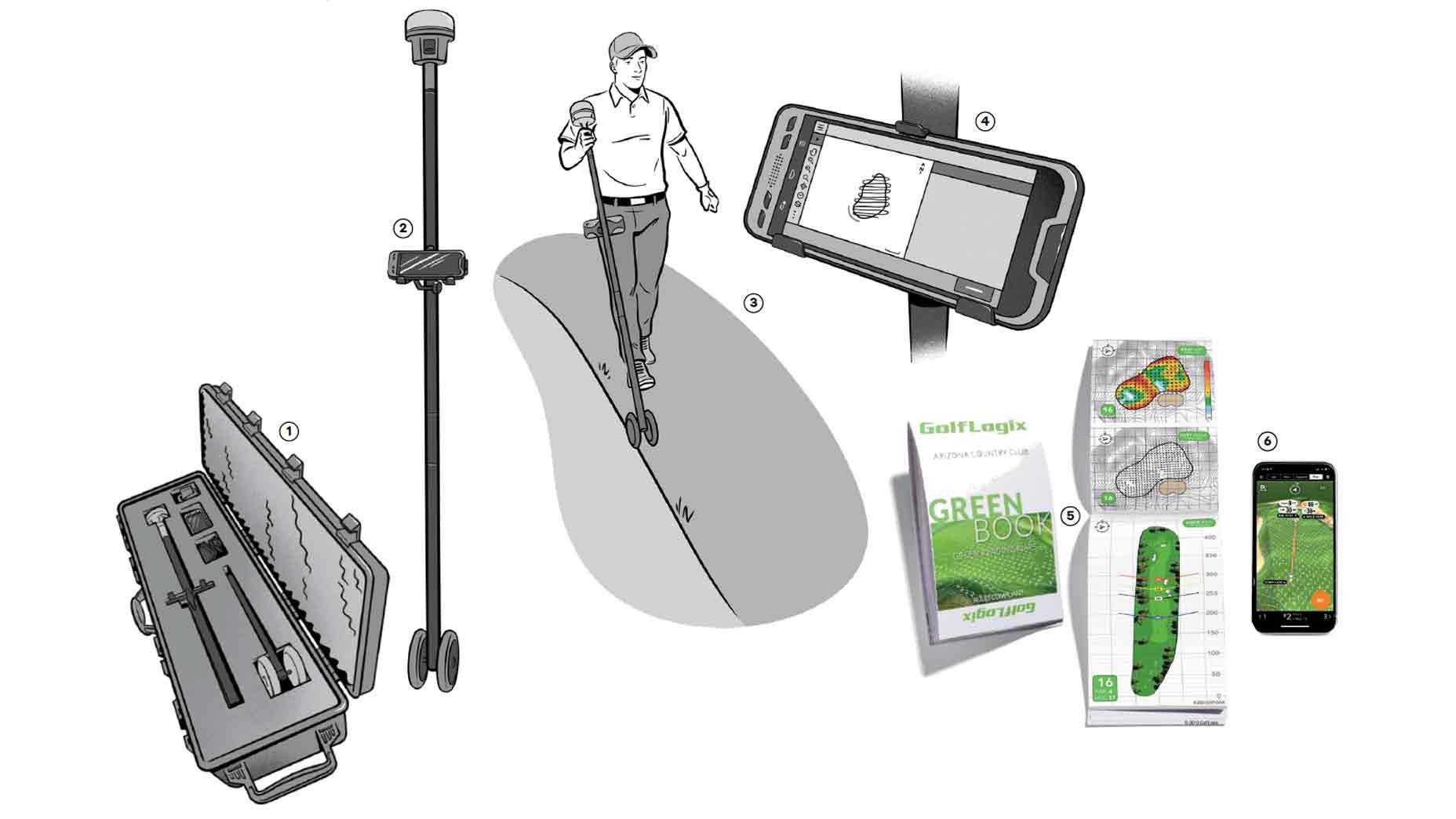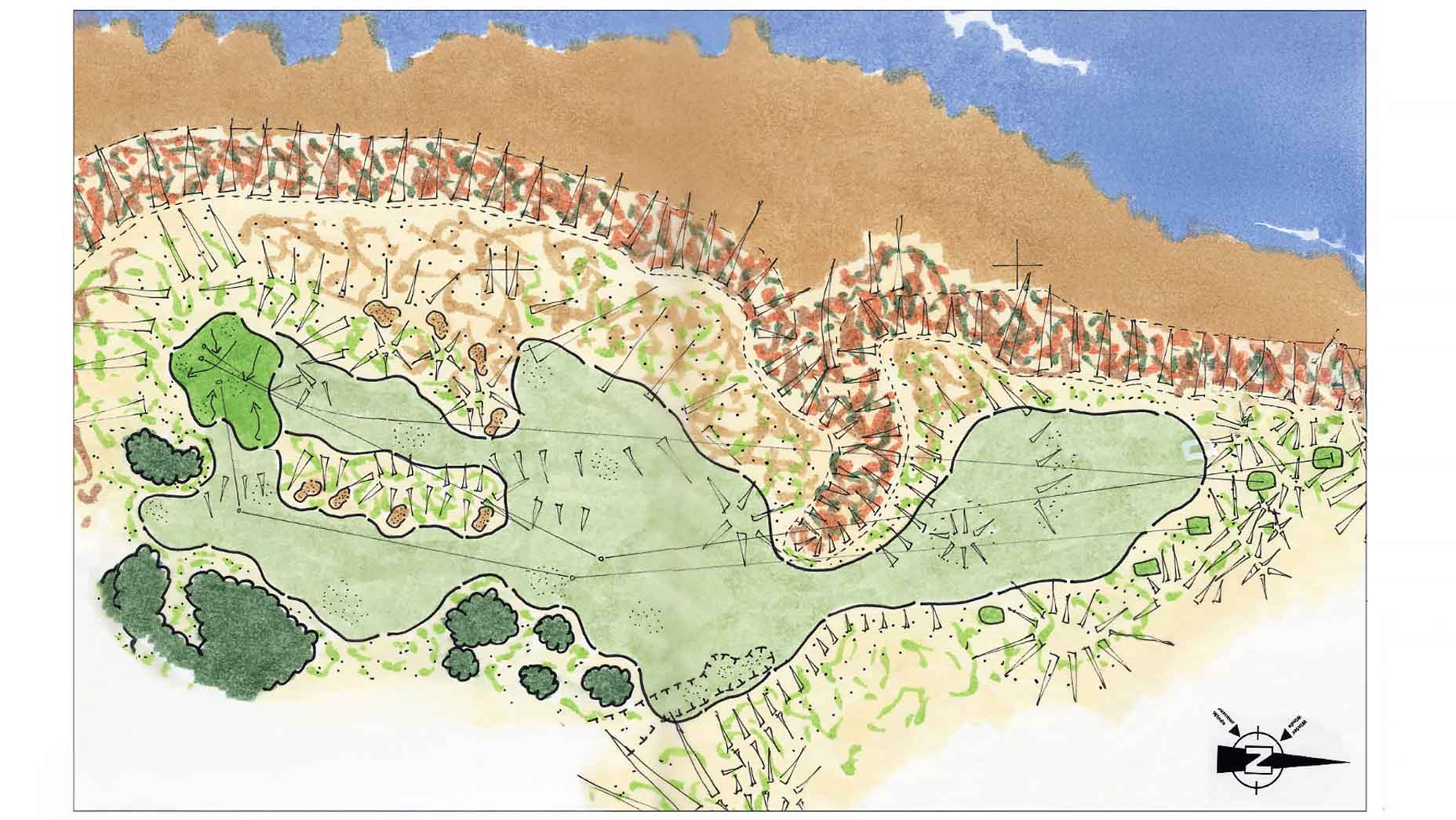Like romance-novel enthusiasts, all golfers want their stories to end happily — with their putts in the hole. One way to achieve this is to go the easy-reading route: Get a green-reading book — or app — from GolfLogix (which, like this website, is owned by 8AM Golf).
Each one presents the slope and severity of a course’s putting surfaces as plain as day and as precise as sunrise. But how does GolfLogix render every contour — from the wildly undulating to the utterly imperceptible — within a ridiculously accurate two to three centimeters? Read on.
Preface
Every would-be author wants to know: How do you get published? In GolfLogix’s case, one of two protagonists starts the process. Either a course itself will reach out to the company to order a spate of books or, if enough requests for a specific course come directly from golfers, GolfLogix will prioritize production of that green book.
Chapter 1: THE GEAR
GolfLogix sends a mapping technician armed with a carrying case (1, see numbered images in photo above), weighing about 50 pounds and stuffed with gear valued at nearly $30,000, to the course. The equipment is so streamlined and user-friendly that a traveling tech isn’t necessary. “If a course is gung-ho and wants it done quicker than we can schedule it, we just send the scanning device to them,” says GolfLogix president Pete Charleston. “We created a training video and have had a ton of head pros do the mapping for us.”
Chapter 2: WALKING THE LINE
The tall, slender scanning device (2), which is fitted with a wheel on the bottom and a data-collecting smartphone (4), is in some ways similar to a GPS surveyor, except that it gathers more than 2 million data points per green. Starting with the first green, the technician (or head pro or greenkeeper) walks the scanner around the entire outline of the putting surface (3), moving relatively slowly to ensure proper capture of the data points.
GolfLogix’s new Putt Line feature tells you the exact read for every putt on 13,000 coursesBy: Michael Chwasky
“What’s crazy,” Charleston says, “is that we can pull this data off the device wirelessly, so our mapping team in Scottsdale, Ariz., can look at it in real time and see that everything was done correctly.” After tracing the green, the tech does what’s called a “looping”— rolling the scanner from one side of the green to the other, at two- to three-foot increments, to fill in the data points for all slopes and contours. The final step is to trace the outline of each greenside bunker. The process takes about 15 to 20 minutes per green.
Chapter 3: MANIPULATING THE DATA
The GolfLogix mapping team accesses the data and begins the mapping process. This involves converting the data into a usable format: manipulating the data by running it through a series of CAD/CAM-like programs to turn it into contours and then translating the contours into the directional-arrow and heat-map treatments that make the information useful.
After that, custom artwork and logos are added, and each green book is turned into a print-ready file and sent off to be manufactured.
Chapter 4: BOOK VS. E-BOOK
Some of us still like the feel of paper in hand — and with their bold graphics, GolfLogix green books (5) are designed to be easily read and used. For those who prefer smartphones, the digital version (6) offers an incomparable feature. Because it’s built into a 3D gaming engine, the app reads the green for you:
As you move around the putting surface, the rendering of the green rotates. Another e-feature: The app reads the break and predicts the perfect putt when you draw a line with your finger from the ball to the cup. “You don’t have to interpret the data,” says Charleston.
Epilogue
Open the book or app, make putts and play happily ever after.
Need help unriddling the greens at your home course? Pick up a custom Green Book from GolfLogix today!











